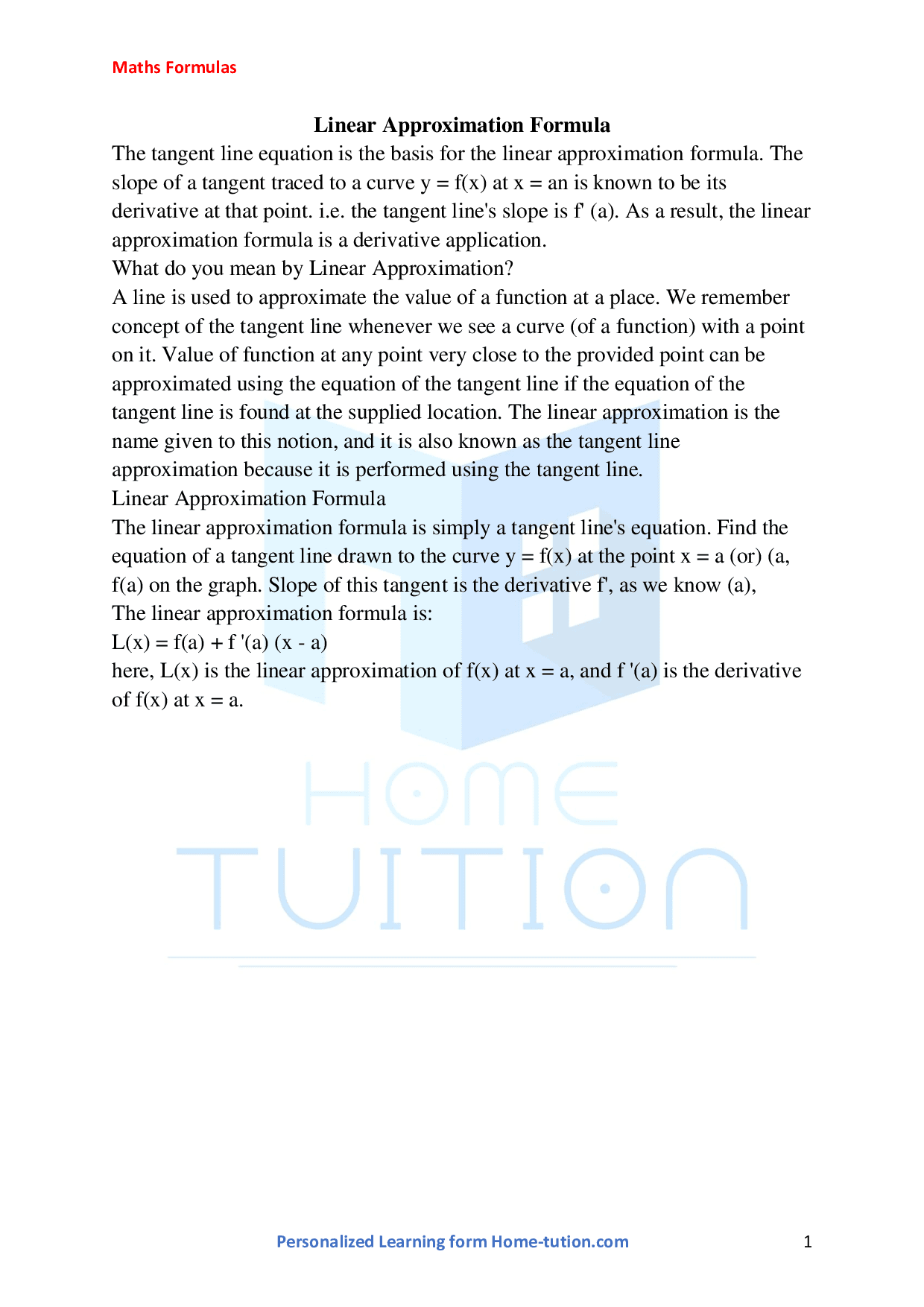About Linear Approximation Formula
The tangent line equation is the basis for the linear approximation formula. The slope of a tangent traced to a curve y = f(x) at x = an is known to be its derivative at that point. i.e. the tangent line's slope is f' (a). As a result, the linear approximation formula is a derivative application.
What do you mean by Linear Approximation?
A line is used to approximate the value of a function at a place. We remember the concept of the tangent line whenever we see a curve (of a function) with a point on it. The value of function at any point very close to the provided point can be approximated using the equation of the tangent line if the equation of the tangent line is found at the supplied location. The linear approximation is the name given to this notion, and it is also known as the tangent line approximation because it is performed using the tangent line.
Linear Approximation Formula
The linear approximation formula is simply a tangent line's equation. Find the equation of a tangent line drawn to the curve y = f(x) at the point x = a (or) (a, f(a) on the graph. Slope of this tangent is the derivative f', as we know (a),
The linear approximation formula is:
L(x) = f(a) + f '(a) (x - a)
here,L(x) is the linear approximation of f(x) at x = a, and f '(a) is the derivative of f(x) at x = a.
